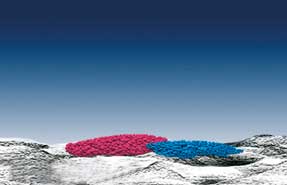WDC Investigates: Printing – Inkjet
After a shaky start, dogged with image quality reservations and doubts over resistance to fading, inkjet printing technology is now the leading photo printing technology except for high-volume photo print production. Inkjet has become the favoured printing process for archival and large-format photo printing and its versatility has enabled inkjet to dominate the home and small office market, with printers able to produce good-quality photos as well as business and graphic documents printed onto a wide variety of media.
The best inkjet printers, combined with great leaps in the technology of inkjet printer inks, means that inkjet printers are now routinely used for high-quality fine art archival printing, both of photographs and photographed works of art, such as paintings and sketches. At the other end of the market, inkjet printers are competing hard with dye-sub technology offering convenience and immediacy in the form of portable mini-printers designed to produce 6×4 inch type photo prints.
Inkjet’s versatility is unparalleled. The same printer that produced a blow-up print of your latest photographic masterpiece on a variety of gloss, matt, semi-matt/gloss photo papers, can also print diagrams and charts on plain paper and card – as well as those letters to your bank manager. Inkjet technology is even used in the food industry, from labelling of foodstuffs, to printing photographic images onto cakes using food dyes instead of ink.
Print fade resistance has been improved markedly during recent years, though the subject of cheap third-party inks, which I’ll deal with separately, can mean that users’ experiences may not be as good as they should be.
But what lies at the core of the popularity of inkjet for photo printing is its ability to produce excellent photo-quality results, quickly and conveniently. The cost of inkjet printers has dropped in recent years, especially ‘All in One’ or ‘Multifunctional’ devices that combine a flatbed scanner with a printer. In fact, more multifunctional units are sold now than single-function printers.

Dye-based inks are absorbed into the paper’s surface.

Pigment-based ink drops sit on the paper’s surface.




